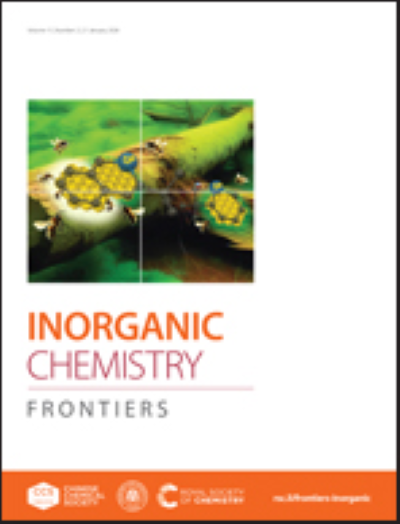A three-in-one strategy enables improved kinetics in an LLZTO solid electrolyte for Li-CO2 batteries with high energy efficiency
IF 6.1
1区 化学
Q1 CHEMISTRY, INORGANIC & NUCLEAR
引用次数: 0
Abstract
Solid-state Li-CO2 batteries possess unique merits, including high environmental friendliness, extremely high energy density, and wide operational temperature range. In this work, we used the garnet-type Li6.4La3Zr1.4Ta0.6O12 (LLZTO) as the solid electrolyte for Li-CO2 batteries. By a simple solid-state reaction under vacuum, LLZTO was tightly composited with organic materials. Detailed analysis confirms that a three-in-one effect was achieved, resulting in additional Li+ migration pathways, improved mechanical properties of the electrolyte, and more active sites for Li2CO3 decomposition. This contributes to accelerated Li+ transport and fast CO2 reaction kinetics. A solid-state Li-CO2 cell was assembled using a Ru@C cathode and an integrated layer of LLZTO@PVDF interfaced with an artificial molten salt. An exceptionally low charging overpotential (below 3.0 V) was achieved, maintaining a charge potential retention rate of over 99%. This work introduces LLZTO as a promising electrolyte for solid-state Li-CO2 batteries, shedding light on the advancement of next-generation Li-CO2 battery technologies.

一个三合一的策略可以改善动力学的LLZTO固体电解质的锂-二氧化碳电池具有高能效
固态Li-CO2电池具有环境友好性高、能量密度极高、工作温度范围宽等独特优点。本文采用石榴石型Li6.4La3Zr1.4Ta0.6O12 (LLZTO)作为Li-CO2电池的固体电解质。在真空条件下通过简单的固相反应,将LLZTO与有机材料紧密复合。详细分析证实,实现了三合一效应,从而增加了Li+迁移途径,改善了电解质的机械性能,并增加了Li2CO3分解的活性位点。这有助于加速Li+运输和快速CO2反应动力学。使用Ru@C阴极和LLZTO@PVDF集成层与人工熔盐界面组装固态Li-CO2电池。实现了极低的充电过电位(低于3.0 V),保持了99%以上的充电电位保留率。这项工作介绍了LLZTO作为一种有前途的固态Li-CO2电池电解质,为下一代Li-CO2电池技术的发展提供了线索。
本文章由计算机程序翻译,如有差异,请以英文原文为准。
求助全文
约1分钟内获得全文
求助全文
来源期刊

Inorganic Chemistry Frontiers
CHEMISTRY, INORGANIC & NUCLEAR-
CiteScore
10.40
自引率
7.10%
发文量
587
审稿时长
1.2 months
期刊介绍:
The international, high quality journal for interdisciplinary research between inorganic chemistry and related subjects
 求助内容:
求助内容: 应助结果提醒方式:
应助结果提醒方式:


